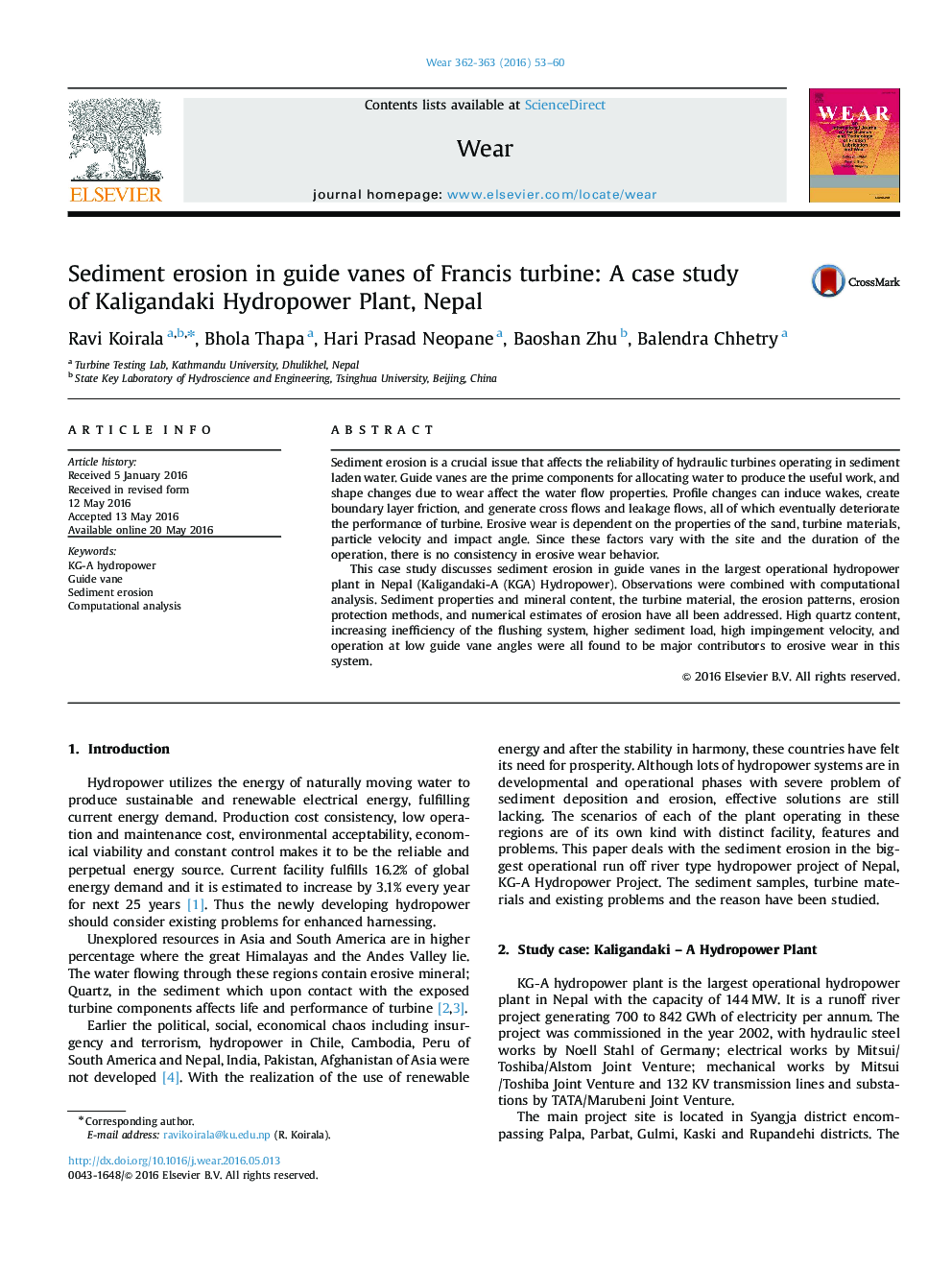| کد مقاله | کد نشریه | سال انتشار | مقاله انگلیسی | نسخه تمام متن |
|---|---|---|---|---|
| 616854 | 1454960 | 2016 | 8 صفحه PDF | دانلود رایگان |
Sediment erosion is a crucial issue that affects the reliability of hydraulic turbines operating in sediment laden water. Guide vanes are the prime components for allocating water to produce the useful work, and shape changes due to wear affect the water flow properties. Profile changes can induce wakes, create boundary layer friction, and generate cross flows and leakage flows, all of which eventually deteriorate the performance of turbine. Erosive wear is dependent on the properties of the sand, turbine materials, particle velocity and impact angle. Since these factors vary with the site and the duration of the operation, there is no consistency in erosive wear behavior.This case study discusses sediment erosion in guide vanes in the largest operational hydropower plant in Nepal (Kaligandaki-A (KGA) Hydropower). Observations were combined with computational analysis. Sediment properties and mineral content, the turbine material, the erosion patterns, erosion protection methods, and numerical estimates of erosion have all been addressed. High quartz content, increasing inefficiency of the flushing system, higher sediment load, high impingement velocity, and operation at low guide vane angles were all found to be major contributors to erosive wear in this system.
Journal: Wear - Volumes 362–363, 15 September 2016, Pages 53–60
